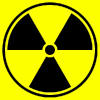|
|
|||
|
Nuclear waste disposal in West Cumbria The 1995-96 Sellafield Public Planning Inquiry |
|||
|
The government and its agencies like the Nuclear Decommissioning Authority (NDA; successor to Nirex) are trying to airbrush out the history of the attempt to find a nuclear waste repository in West Cumbria. Documents and scientific papers which were formerly available on their websites have been removed; the Nirex documents have been transferred to the safe keeping of the British Geological Survey, where they may be 'consulted' at Keyworth, Nottinghamshire. But nothing remains online, not even an index of the documents and reports. One aim of this page is to rectify that omission. I have re-scanned the body of the Inspector's Report, which is now in text-searchable pdf form. As it is 16 Mb in size, you might wish to download it in three separate parts (A, B and C), or just read his conclusions. His assessor was Colin Knipe, an engineering geologist, and his Assessor's Report forms Appendix A to the Inspector's report. It was downloaded from the Johnson, Poole & Bloomer website as a series of rtf files, and converted to pdf. Appendix 2 (Appearances) and Appendix 3 (Documents and plans) are combined here. Here is what the Inspector said about the location of the proposed repository:
"... the Assessor's advice is that 2 principles of ovemding value can be derived from his review of the geological, geomorphological & hydrogeological criteria. One principle is that the location should be in a region of low hydraulic gradients, so that there should be slow-moving & long groundwater pathways: and the other is that the geology & hydrogeology of the site and its district should be sufficiently uncomplicated as to be readily characterisable & predictable." [Inspector's Report, para. 6A.60]
Neither of these two principles is respected anywhere in West Cumbria:
There were three principal groups of objectors at the Inquiry - Cumbria County Council, Greenpeace and Friends of the Earth. Their evidence was compiled into a book: Radioactive waste disposal at Sellafield site selection, geological and engineering problems Edited by RS Haszeldine and DK Smythe University of Glasgow, 1996, ISBN 085261524-8 which is available for download here. Copies of the original papers with full colour diagrams will be made available in due course; the book only had black-and-white scans of the diagrams. The Nirex submissions concerning the geology and hydrogeology will also be made available. Two articles disproving Nirex's results on the supposed safety of a Sellafield-type site were published in the scientific literature by University of Glasgow researchers in 1995 and 1999. The full research is documented in the doctoral thesis of Chris McKeown, on open file. The work was based on Nirex's own detailed investigations at Longlands Farm. Among the many important conclusions of this work was that the host rocks chosen by Nirex were around one thousand times too permeable (i.e. allowing contaminated water to flow through them) for the site to be considered 'safe'. Had Nirex's scientific and technical work not been challenged in this way, we would have been well on the way to the planned commissioning of an actual deep waste repository below Longlands Farm, planned for 2012 (see the Inspector's Report, para. 3A.12). The Glasgow University work has never been refuted or even challenged in the peer-reviewed scientific literature. David Oldroyd, a historian of science, has kindly granted me permission to put online the excellent chapter, Nirex and the great denouement, from his memoir on the Lake district, Earth, Water Ice and Fire: two hundred years of geological research in the English Lake District (Geol. Soc. London, Memoir 25, 2002). He recounts the development of Nirex work at Sellafield, the geological arguments put forward pro- and anti-Nirex at the planning inquiry, and the subsequent events up to 2001. The extensive list of references for Oldroyd's memoir is here. Oldroyd's book is published by the Geological Society of London.
|

